Abstract
The concentrations of ATP and the ATP/AMP concentration ratios were maintained in thioglycollate-elicited mouse peritoneal macrophages incubated in vitro for 90 min in the presence or absence of added substrate: rates of glycolysis, lactate formation and glutamine utilization were approximately linear with time for at least 60 min of incubation. The rate of oxygen consumption by macrophages was only increased above the basal rate (i.e. that in the absence of added substrate) by addition of succinate or pyruvate, or by addition of the uncoupling agent carboxyl cyanide m-chlorophenylhydrazone ('CCCP'); it was decreased by 75% by the addition of KCN. These findings suggest that metabolism of endogenous substrate can provide most, if not all, of the energy requirement of these cells, at least for a short period. The rates of glucose and glutamine utilization by incubated macrophages were approx. 300 and 100 nmol/min per mg of protein respectively. A large proportion of the glutamine that is utilized is converted into glutamate and aspartate, and very little (perhaps less than 10%) is oxidized. Similarly almost all of the glucose that is utilized is converted into lactate and very little is oxidized. This characteristic is similar to that of resting lymphocytes and rapidly dividing cells; in non-proliferating macrophages it may be a mechanism to provide precision in control of the rate of biosynthetic processes that utilize intermediates of these pathways, e.g. purines and pyrimidines for mRNA for the synthesis of secretory proteins and glycerol 3-phosphate for phospholipid synthesis for membrane recycling. No utilization of acetoacetate or 3-hydroxybutyrate by macrophages was detected. In contrast, both butyrate and oleate were oxidized. The rate of [14C]oleate conversion into 14CO2 (1.3 nmol/h per mg of protein) could account for most of the oxygen consumption by incubated macrophages, suggesting that long-chain fatty acids might provide an important fuel in situ. This may be one explanation for the secretion of lipoprotein lipase by these cells, to provide fatty acids for oxidation from the degradation of local triacylglycerol.
Full text
PDF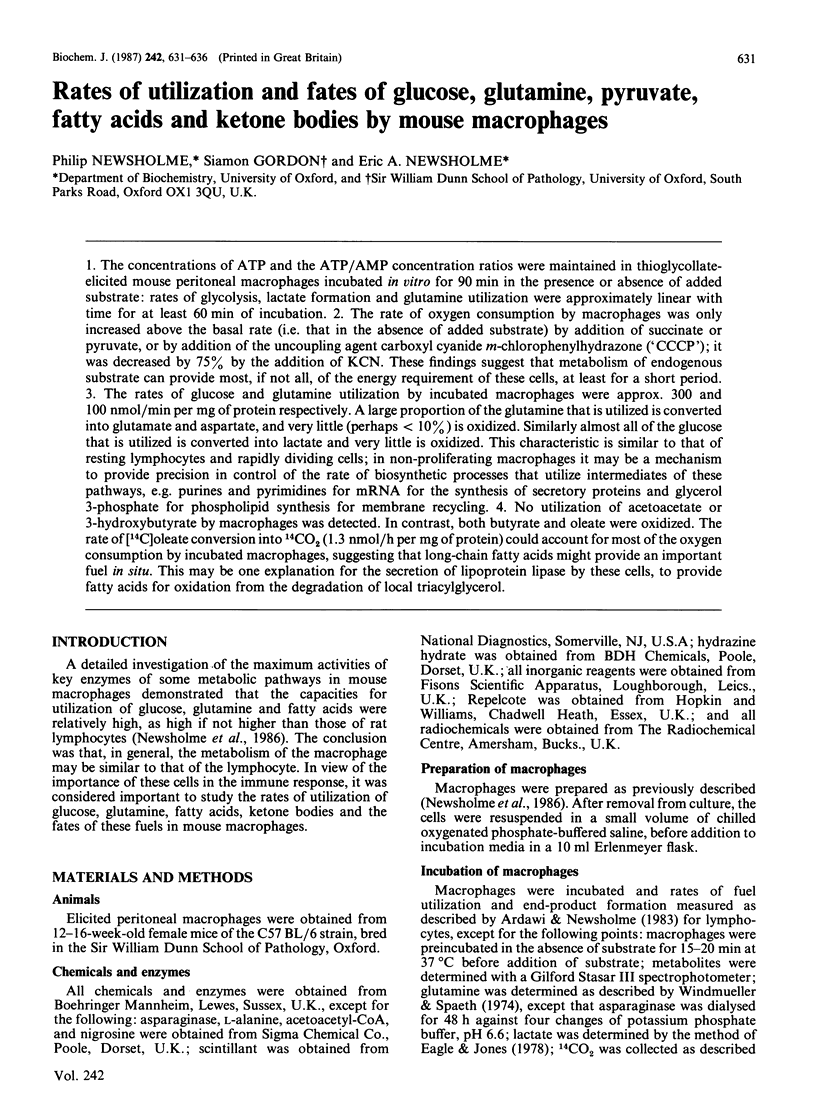
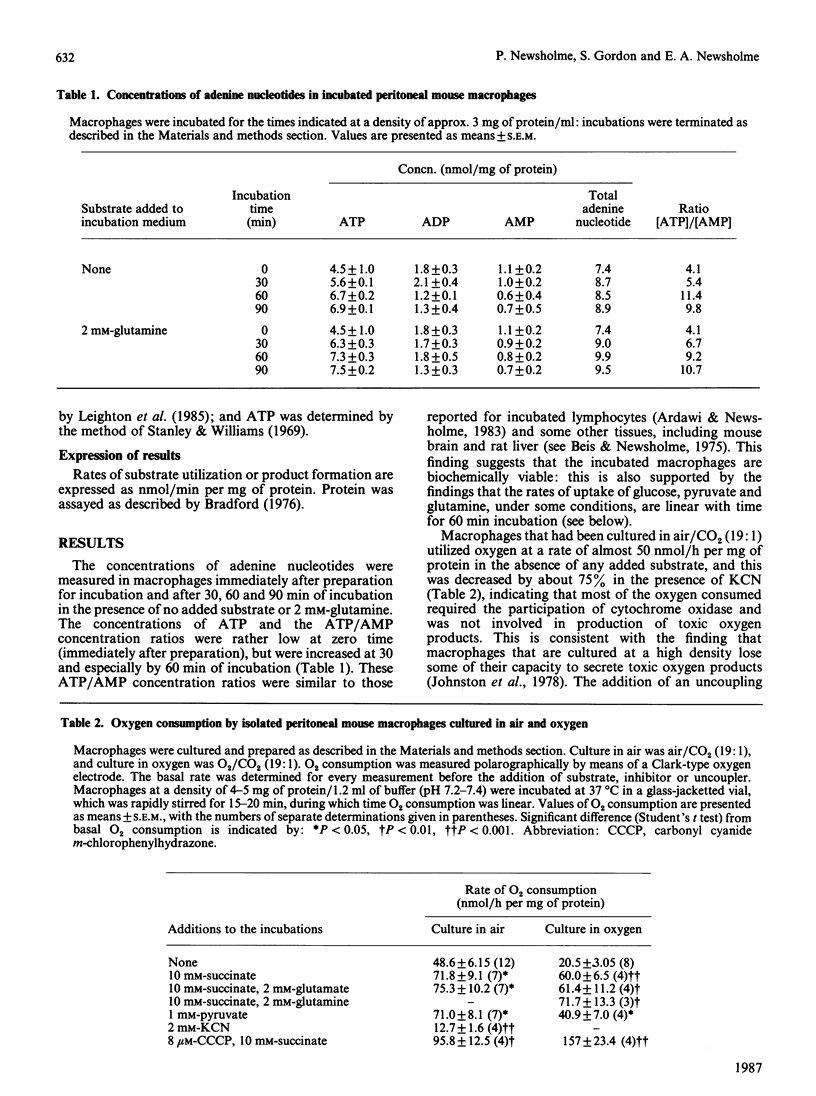
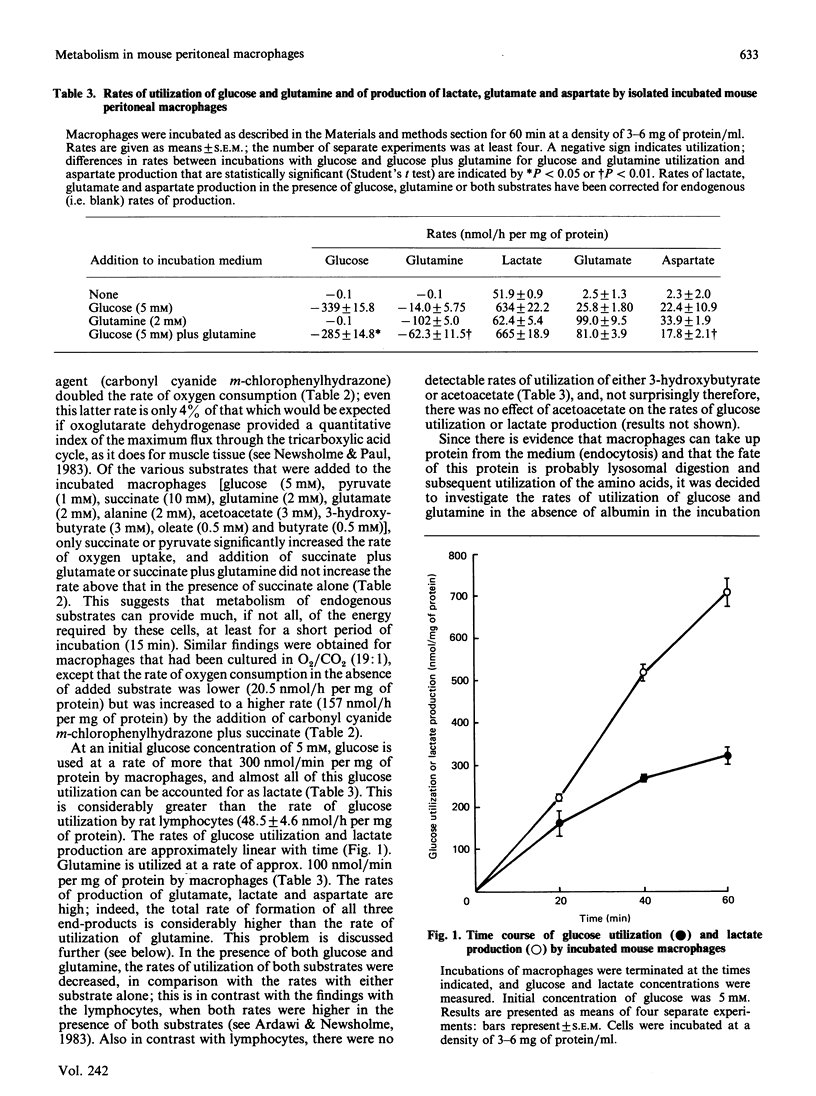
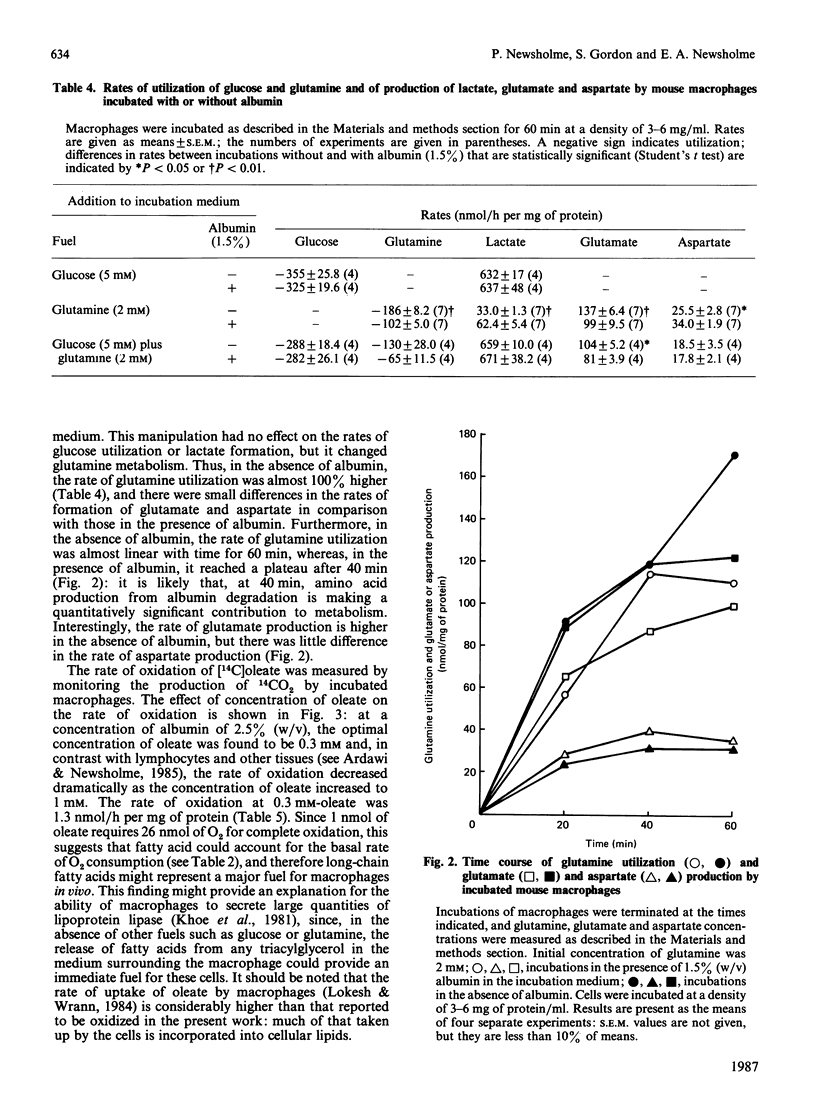
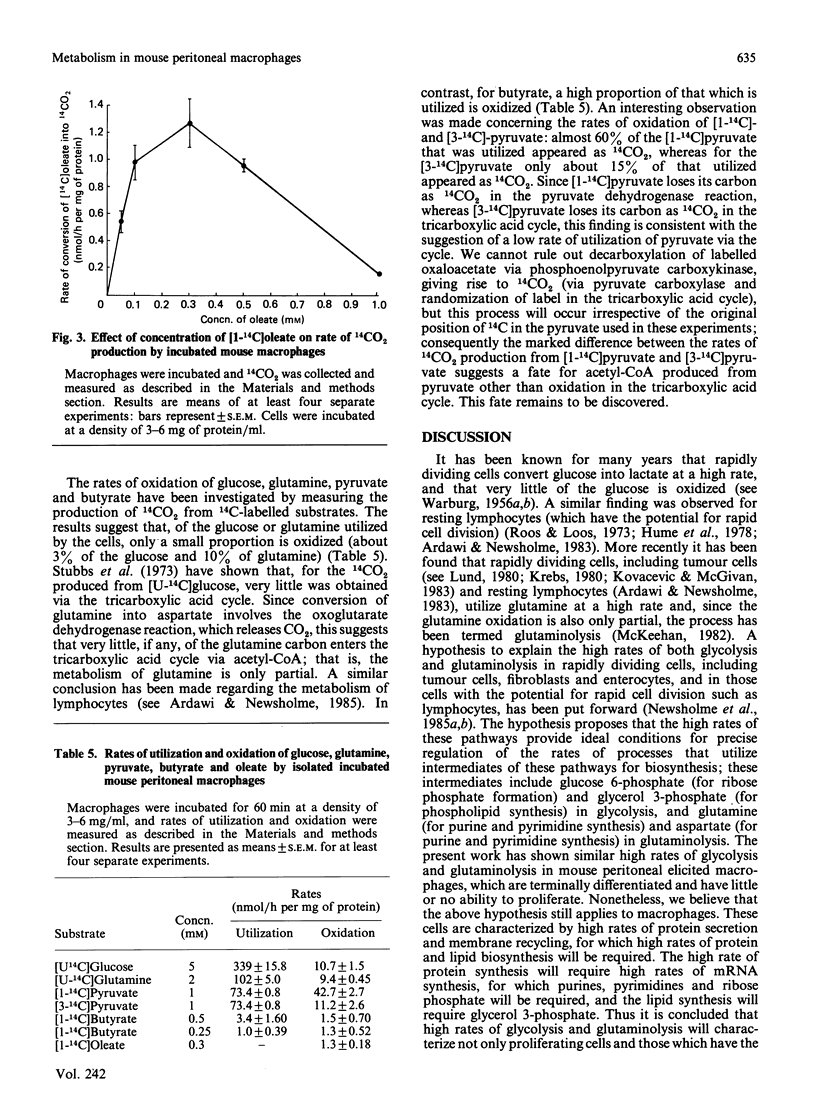
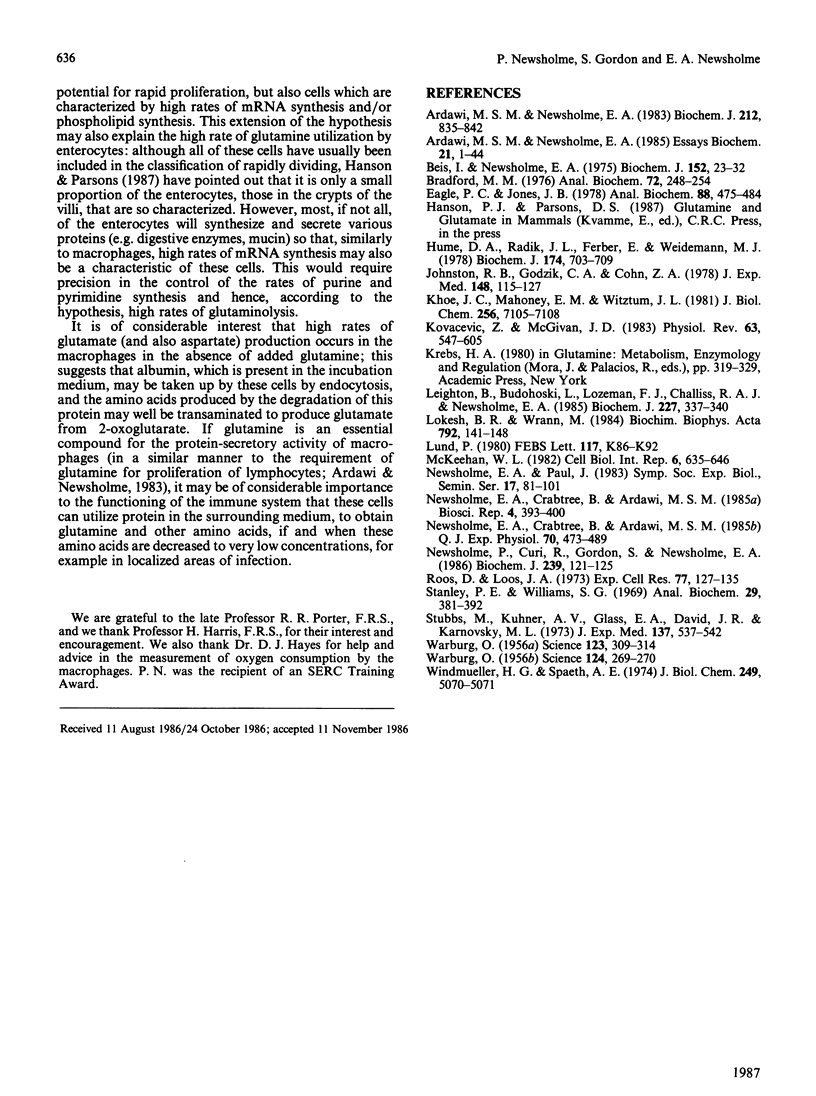
Selected References
These references are in PubMed. This may not be the complete list of references from this article.
- Ardawi M. S., Newsholme E. A. Glutamine metabolism in lymphocytes of the rat. Biochem J. 1983 Jun 15;212(3):835–842. doi: 10.1042/bj2120835. [DOI] [PMC free article] [PubMed] [Google Scholar]
- Ardawi M. S., Newsholme E. A. Metabolism in lymphocytes and its importance in the immune response. Essays Biochem. 1985;21:1–44. [PubMed] [Google Scholar]
- Beis I., Newsholme E. A. The contents of adenine nucleotides, phosphagens and some glycolytic intermediates in resting muscles from vertebrates and invertebrates. Biochem J. 1975 Oct;152(1):23–32. doi: 10.1042/bj1520023. [DOI] [PMC free article] [PubMed] [Google Scholar]
- Bradford M. M. A rapid and sensitive method for the quantitation of microgram quantities of protein utilizing the principle of protein-dye binding. Anal Biochem. 1976 May 7;72:248–254. doi: 10.1016/0003-2697(76)90527-3. [DOI] [PubMed] [Google Scholar]
- Engel P. C., Jones J. B. Causes and elimination of erratic blanks in enzymatic metabolite assays involving the use of NAD+ in alkaline hydrazine buffers: improved conditions for the assay of L-glutamate, L-lactate, and other metabolites. Anal Biochem. 1978 Aug 1;88(2):475–484. doi: 10.1016/0003-2697(78)90447-5. [DOI] [PubMed] [Google Scholar]
- Hume D. A., Radik J. L., Ferber E., Weidemann M. J. Aerobic glycolysis and lymphocyte transformation. Biochem J. 1978 Sep 15;174(3):703–709. doi: 10.1042/bj1740703. [DOI] [PMC free article] [PubMed] [Google Scholar]
- Johnston R. B., Jr, Godzik C. A., Cohn Z. A. Increased superoxide anion production by immunologically activated and chemically elicited macrophages. J Exp Med. 1978 Jul 1;148(1):115–127. doi: 10.1084/jem.148.1.115. [DOI] [PMC free article] [PubMed] [Google Scholar]
- Khoo J. C., Mahoney E. M., Witztum J. L. Secretion of lipoprotein lipase by macrophages in culture. J Biol Chem. 1981 Jul 25;256(14):7105–7108. [PubMed] [Google Scholar]
- Kovacevic Z., McGivan J. D. Mitochondrial metabolism of glutamine and glutamate and its physiological significance. Physiol Rev. 1983 Apr;63(2):547–605. doi: 10.1152/physrev.1983.63.2.547. [DOI] [PubMed] [Google Scholar]
- Leighton B., Budohoski L., Lozeman F. J., Challiss R. A., Newsholme E. A. The effect of prostaglandins E1, E2 and F2 alpha and indomethacin on the sensitivity of glycolysis and glycogen synthesis to insulin in stripped soleus muscles of the rat. Biochem J. 1985 Apr 1;227(1):337–340. doi: 10.1042/bj2270337. [DOI] [PMC free article] [PubMed] [Google Scholar]
- Lokesh B. R., Wrann M. Incorporation of palmitic acid or oleic acid into macrophage membrane lipids exerts differential effects on the function of normal mouse peritoneal macrophages. Biochim Biophys Acta. 1984 Feb 9;792(2):141–148. doi: 10.1016/0005-2760(84)90215-7. [DOI] [PubMed] [Google Scholar]
- Lund P. Glutamine metabolism in the rat. FEBS Lett. 1980 Aug 25;117 (Suppl):K86–K92. doi: 10.1016/0014-5793(80)80573-4. [DOI] [PubMed] [Google Scholar]
- McKeehan W. L. Glycolysis, glutaminolysis and cell proliferation. Cell Biol Int Rep. 1982 Jul;6(7):635–650. doi: 10.1016/0309-1651(82)90125-4. [DOI] [PubMed] [Google Scholar]
- Newsholme E. A., Crabtree B., Ardawi M. S. Glutamine metabolism in lymphocytes: its biochemical, physiological and clinical importance. Q J Exp Physiol. 1985 Oct;70(4):473–489. doi: 10.1113/expphysiol.1985.sp002935. [DOI] [PubMed] [Google Scholar]
- Newsholme E. A., Crabtree B., Ardawi M. S. The role of high rates of glycolysis and glutamine utilization in rapidly dividing cells. Biosci Rep. 1985 May;5(5):393–400. doi: 10.1007/BF01116556. [DOI] [PubMed] [Google Scholar]
- Newsholme P., Curi R., Gordon S., Newsholme E. A. Metabolism of glucose, glutamine, long-chain fatty acids and ketone bodies by murine macrophages. Biochem J. 1986 Oct 1;239(1):121–125. doi: 10.1042/bj2390121. [DOI] [PMC free article] [PubMed] [Google Scholar]
- Roos D., Loos J. A. Changes in the carbohydrate metabolism of mitogenically stimulated human peripheral lymphocytes. II. Relative importance of glycolysis and oxidative phosphorylation on phytohaemagglutinin stimulation. Exp Cell Res. 1973 Mar 15;77(1):127–135. doi: 10.1016/0014-4827(73)90561-2. [DOI] [PubMed] [Google Scholar]
- Stanley P. E., Williams S. G. Use of the liquid scintillation spectrometer for determining adenosine triphosphate by the luciferase enzyme. Anal Biochem. 1969 Jun;29(3):381–392. doi: 10.1016/0003-2697(69)90323-6. [DOI] [PubMed] [Google Scholar]
- Stubbs M., Kühner A. V., Glass E. A., David J. R., Karnovsky M. L. Metabolic and functonal studies on activated mouse macrophages. J Exp Med. 1973 Feb 1;137(2):537–542. doi: 10.1084/jem.137.2.537. [DOI] [PMC free article] [PubMed] [Google Scholar]
- WARBURG O. On respiratory impairment in cancer cells. Science. 1956 Aug 10;124(3215):269–270. [PubMed] [Google Scholar]
- WARBURG O. On the origin of cancer cells. Science. 1956 Feb 24;123(3191):309–314. doi: 10.1126/science.123.3191.309. [DOI] [PubMed] [Google Scholar]
- Windmueller H. G., Spaeth A. E. Uptake and metabolism of plasma glutamine by the small intestine. J Biol Chem. 1974 Aug 25;249(16):5070–5079. [PubMed] [Google Scholar]


